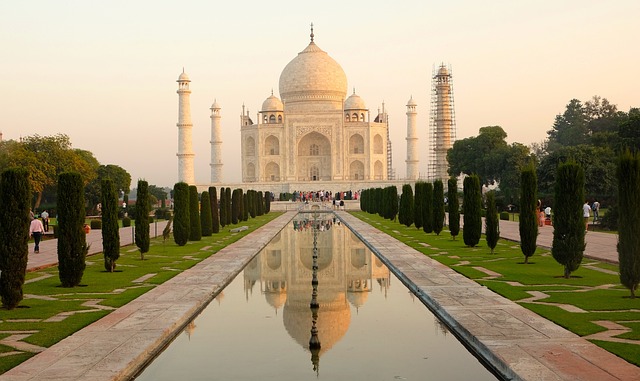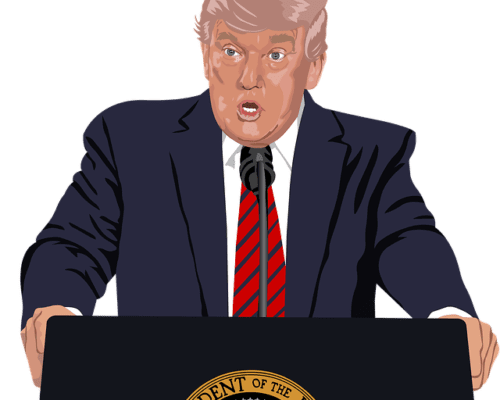Education Hub.
OCTOBER 25, 2024
Investing in India

Why India matters
India’s a bit like the elephants that frequent its forests: a force to be reckoned with. The nation has been independent for little more than 70 years, and in that time it’s bounced back from the colonial experience with aplomb. India is now one of the world’s biggest economies – and that unstoppable growth means plenty of opportunities for investors.
What’s the story so far? Way back in the 18th century, India was the biggest economy in the world – accounting for a quarter of global output. But the collapse of the Mughal Empire and the British takeover brought it down: by the time the Brits left in 1947, India represented just 3% of the world’s economy.
That harrowing experience led to the country closing itself off. India adopted a protectionist trade policy, preventing the rupee from being converted into other currencies and imposing high tariffs on all imported goods in an effort to become self-reliant. That, combined with labyrinthine bureaucracy (businesses would need up to 80 different approval forms to start operating), was a recipe for economic disaster. While neighboring China powered ahead, India languished.
By 1991, things had turned into a full-on catastrophe. With the government about to default on its loans and reserves of US dollars and British pounds dangerously low, India almost collapsed. The IMF came to the rescue with a multi-billion-dollar bailout, but even then India had to send some of its gold reserves abroad as collateral for further European loans.
The rules of the bailout were possibly even more integral to India’s recovery than the money. The country was forced to dismantle trade barriers, streamline its bureaucracy, and open itself up again to foreign investment – and by doing so, ideal conditions were created for India to flourish once again.
And flourish it has. In 2000, both Germany and Japan’s economies were larger than India’s (when measuring by purchasing power). Now, India’s economy is bigger than the two of them combined. In absolute terms, India’s economy is the fifth-biggest in the world, and it’s been growing around 7% a year.
At Vantage Capital, our view is that India is ripe with investment opportunity. India’s only getting richer, smarter, and bigger. And as that wealth gets spent, investors should continue to profit.
An overview of India’s economy
As in most big economies, services make up the real bulk of India’s economy. Its massive English-speaking population has long made it attractive to tech companies worldwide, which outsource work to benefit from cheap Indian labor – in customer support and, increasingly, computer engineering. All that tech talent has fueled the rise of digital unicorns: e-commerce site Flipkart (now controlled by Walmart) and ride-sharing company Ola are some of the biggest.
Financial services are a particularly hot sector, accounting for 37% of the economy. As new technology makes banking even easier, that number could soar – India’s insurance industry is already growing by more than 20% each year – but more on that in the next session.
With that said, India’s a country of huge inequality. There are very rich people and luxury designer stores, and there are extremely poor people – millions of whom lack access to even the most basic of human requirements. Around 60% of the population lives on less than $3.50 a day. Those numbers are changing rapidly, however, and the Indian government is working toward eliminating extreme poverty by 2030.
India’s unique and changing economy poses both opportunity and challenges. Next, we’ll look on the bright side.
What’s changing in India?
The near future looks pretty bright. India’s working-age population will soon be the largest in the world – and an abundance of bright young things should help the economy maintain a tidy 7% annual growth in the coming years. Government reforms could help boost that further: recent policy changes encouraging more foreign investment and startup creation could help generate additional growth.
Recent reforms have already targeted boosting tax revenue and limiting bureaucracy: the surprise replacement of high-value banknotes in 2016 tried to tackle the former by reducing corruption and tax avoidance. The rollout of a nationwide sales tax in 2017 was, however, a triumph – helping to bring all 29 of India’s states into one common, and commonly taxed, market.
India is also urbanizing at a hard-to-fathom rate. By 2025, there’ll be 69 Indian cities with a population over one million. Some of these cities will be larger than countries: by 2030, Mumbai’s economy is expected to be bigger than Malaysia’s today. This push of people moving into cities will boost infrastructure spending – and encourage the development of businesses to serve these new consumers.
How is technology changing India?
Digitization offers huge potential. India’s high-tech Aadhaar (Foundation) system has given everyone in the country a unique biometric ID, which allows previously documentation-deprived Indians to finally sign up for bank accounts and cashless purchases. As more and more Indians get online (there could be almost a billion smartphone users in India by 2025), expect banking and lending to become even bigger in India – getting a loan could be as easy as grabbing a lassi.
And hopefully there’ll be more Indians around to use that technology, thanks to “Modicare” – the prime minister’s crack at healthcare reform. The program aims to give 500 million people free health insurance, which should lead to a massive boost in health spending in the country.
What are India’s domestic challenges?
India’s infrastructure is pretty dire, and a lack of investment in recent decades has kept things precarious: 15% of homes still lacked electricity in 2016. Massive spending will be needed to upgrade these systems to 21st-century standards, and if that doesn’t materialize it could hurt India’s economic growth.
But financing that spending might not be easy – the recent debt crisis at Indian “shadow bank” IL&FS has raised concerns about the precariousness of India’s lending economy. Financial institutions able to lend with less regulation than big banks, shadow banks provide tons of much-needed capital to the Indian economy.
What are India’s international challenges?
India is also vulnerable to the vagaries of the US economy. A strong US dollar can drive up Indian inflation by increasing the cost of US imports (though Indian exporters would benefit). But a more pressing concern is right next door: India’s contentious relationship with Pakistan has been flaring up again in recent years. If it worsens further, the resulting instability could do damage to both economies.
While local conflicts are simmering, global temperatures continue to soar and rain shortages could reduce farm income by 25% in un-irrigated areas – potentially causing huge food supply issues for India’s growing population.
What’s India’s immediate future?
Judging by recent events, there’s a risk India’s economy could cool off in the next few years. Economic growth slowed at the end of 2018, automobile sales are currently tanking, and in May 2019 Indian consumer goods bellwether Hindustan Unilever posted its slowest quarterly growth in 18 months.
Some economists think India might be heading for a South Africa-style “middle-income trap” where rising wages make costs too high for manufacturing exports to be competitive, but the economy isn’t advanced enough to compete with advanced economies’ high-tech production. To avoid this, economists are urging the country to give poorer Indians the infrastructure and education they need to earn more and boost domestic demand.
Though the challenges are big, they’re not insurmountable – and investing in India still offers promise.
So how do you invest in India?
Although India’s opened up its economy to foreign institutional investment, overseas individuals still can’t directly buy Indian stocks.
But that doesn’t mean individual investors are out of luck. Some Indian firms have Global or American Depositary Receipts (ADRs).
For a more diversified approach, you could invest in a fund that tracks the value of the Indian stock market overall. Sensex and the Nifty 50 are the two leading indices that follow the biggest companies on Indian stock exchanges. Other exchange-traded funds like iShares MSCI India let you invest in a basket of large Indian firms.
For something specific, you could go for a fund or invest in a particular Indian industry. Maybe you’re convinced all that urbanization will boost builders, in which case a sector-specific fund might pique your interest. However, we urge investors to be careful when researching these as it is crucial to look at what shares the funds hold (despite their names) to get a better idea of where exactly your investments are going.
At Vantage Capital, we offer a broad range of investment opportunities in India, depending on each of client’s unique preferences.
How do I invest in Indian bonds?
One opportunity is the MCB India Sovereign Bond ETF that lets foreigners easily invest in India’s government debt, and compensates them with half-yearly interest payments for funding India’s growth. In May 2019, 10-year bonds provided a yield of over 7%.Are there other ways to invest in India?
You could invest in foreign companies that stand to win big in India. Walmart now has a huge Indian stake thanks to its Flipkart acquisition, and affordable smartphone companies like Xiaomi and Samsung could see benefits from more Indians logging on in the future.
No matter how you choose to invest, it’s always a good idea to make sure you’re not too concentrated in any one market – especially a developing one like India. If you’ve got money in emerging market funds you probably already have some sort of stake in India, so take that into account when figuring how much more to send its way.
At Vantage Capital, we view India as a good investment environment, especially over the long term.






